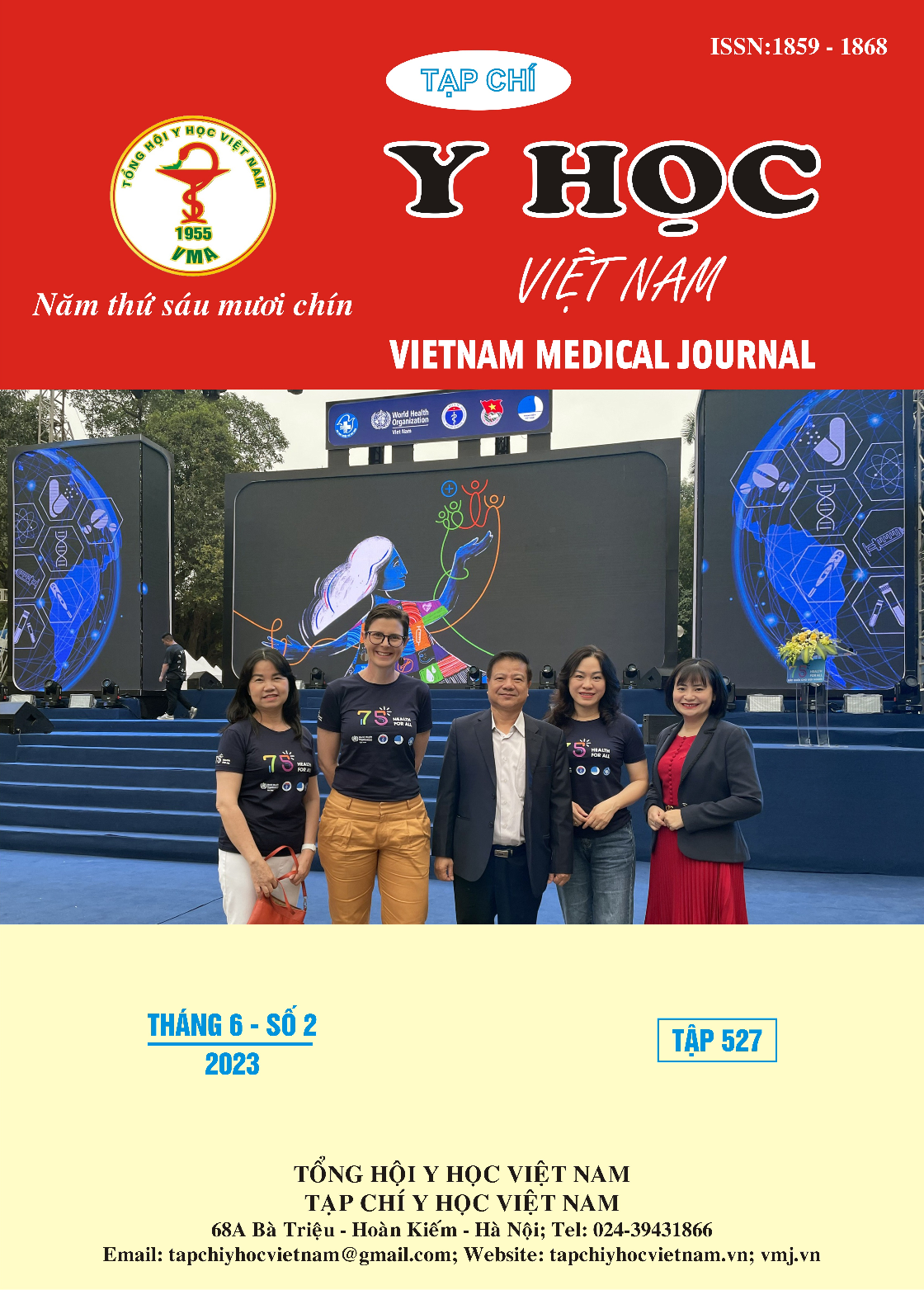CLINICAL AND SUBCLINICAL CHARACTERISTICS OF DRUG-RESISTANT EPILEPSY IN CHILDREN AT THE DEPARTMENT OF NEUROLOGY - NGHE AN OBSTETRICS AND PEDIATRICS HOSPITAL IN 2020
Main Article Content
Abstract
Objective: To describe clinical, subclinical characteristics of drug-resistant epilepsy in children at the Department of Neurology - Nghe An Obstetrics and Pediatrics Hospital in 2020. Subjects and research methods: A prospective, cross-sectional study on 32 patients was diagnosed with drug-resistant epilepsy during the period from January 2020 to September 2020. Results: The most common age of onset of the first epileptic seizure was under 3 years old (65.7%) and there were 53.1% of cases with clinical change over time. Most of the first epileptic seizures were generalized (50%) and secondary generalized (28.1%) types. The group of patients with generalized epileptic seizure accounted for 68.8%, and 31.3% of patients with partial epileptic seizure. The majority of patients had a weekly epileptic seizure frequency (59.4%). There were 90.6% cases of psychomotor retardation in which mild, moderate and severe levels accounted for 56.2%, 31.3% and 3.1%, respectively. On electroencephalogram, there were 21.9% cases of epileptic paroxysmal waves and 31.3% of cases with abnormal images of brain parenchyma on magnetic resonance. Conclusion: Age of epileptic seizure onset, generalized epilepsy type, psychomotor retardation, epileptic paroxysmal waves on electroencephalogram and abnormal images of brain parenchyma on magnetic resonance imaging predictive factors for the risk of drug-resistant epilepsy in children
Article Details
Keywords
clinical, subclinical, drug-resistant epilepsy, children.
References
2. Trang Thị Hoàng Mai, Lê Thị Khánh Vân, Nguyễn Lê Trung Hiếu (2019). Yếu tố nguy cơ kháng thuốc trong điều trị động kinh ở trẻ em tại Bệnh viện Nhi Đồng 2. Tạp chí Y học Thành phố Hồ Chí Minh, 23(3), tr. 132-139.
3. Matthew M. Zack, MD, Rosemarie Kobau (2017). National and state estimates of the numbers of adults and children with active epilepsy United States, 2015. Center for Disease Control and Prevention, 66(31);821–825.
4. Olusanya BO, Wright SM, Nair MKC, et al (2020). Global Burden of Childhood Epilepsy, Intellectual Disability, and Sensory Impairments. Pediatrics; 146(1). 146(1):e20192623.
5. Irawan Mangunatmadja, Raden Muhammad Indra, Dwi Putro Widodo, et al (2021). Risk Factors for Drug Resistance in Epileptic Children with Age of Onset above Five Years: A Case-Control. Behavioural Neurology.
6. Pakize Karaoğlu, Uluç Yaş, Ayşe İpek Polat, et al (2021). Clinical predictors of drug-resistant epilepsy in children. Turkish Journal of Medical Sciences; 51(3):1249-1252.
7. Đặng Anh Tuấn (2018). Nghiên cứu lâm sàng, tổn thương não và các yếu tố liên quan đến động kinh cục bộ kháng thuốc ở trẻ em. Luận án Tiến sĩ Y học, Trường Đại học Y Hà Nội.
8. Nguyễn Hữu Sơn, Ninh Thị Ứng (2010). Nghiên cứu sự biến đổi điện não đồ ở trẻ em 6-15 tuổi bị động kinh trước và sau điều trị bằng Topiramate. Tạp chí Y học Thành phố Hồ Chí Minh, 14(4), 1-9.
9. Lê Văn Tuấn và Cs (2014). Các yếu tố nguy cơ liên quan đến động kinh trẻ em. Tạp chí Y học Thành phố Hồ Chí Minh, 18(1), 521-527.


